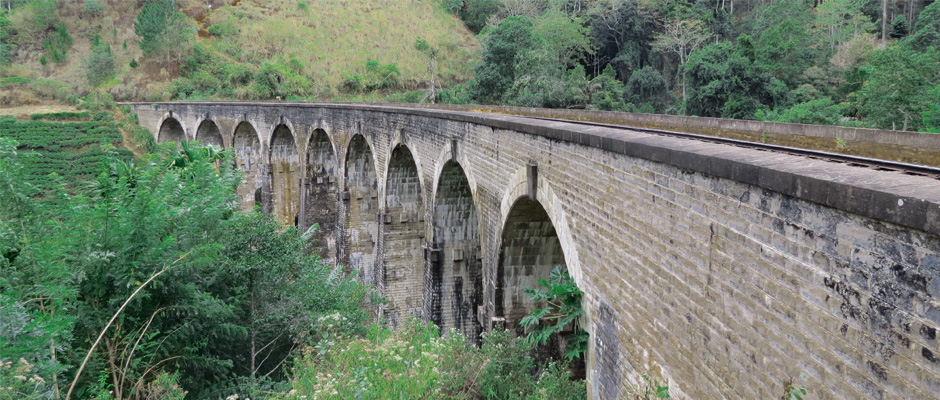9 arch bridge ella
Fabulous achievement in Colonial railway engineering is located in a landlocked hill country known as “Gotuwala” states in between Ella and Demodara railway stations, almost 3100ft above the mean sea level and it is approximately 100ft high and 400ft long.

This bridge was entirely built with solid rocks, bricks and cement without using a single piece of steel and it was finally commissioned in 1921 adding one of the most fascinating moments to the history of Ceylon Government railway.
The viaduct at Gotuwala is addressed in different names such as: Nine Arch Bridge”, “Nine Heart Bridge” and occasionally named as “Nine Skies Bridge” in Sinhala “Ahas named Palama” beautifully designed arches numbering nine.
An Arch is designed in the shape of a curve which conveyed along the curve of the arch to the support of each end and these supports carry the load of the entire bridge and responsible for holding the arch in precise unmoving position which does not push load forces straight down.
9 Arch bridge ella was regarded as the largest viaduct in East at the time of construction of viaduct at Gotuwala by the author of the “Railways Sri Lanka” Dr. David Hyatt.
There’s a popular village folktale saying “that when the construction of the viaduct commenced World War 1 broke out resulting in restricting shipping movements and the steel consignments could not be ordered due to the war situation, so that the railway engineers had to design the viaduct without using steel”.
With the opening of the train service from Colombo to Ambepussa on 2nd October 1895 with the intention of improving the growing colonial economy and social advancement in the island, “Uva Railway” from Colombo to Badulla was created to transport tea and coffee to the capital of Colombo where the construction of “Demodara Railway “took place which has become an integral part of Sri Lanka Railway heritage.
Demodara Railway experts discovered that the elevation difference between the adjoining hills was an immense idea to implement the new track which was an innovative design in maintaining the maximum permissible inclination of the 1:44 and curves of five chains. This special design of “Demodara Railway” was called “Looping the loop” which involved a tunnel 414ft long beneath the railway station located approximately 100ft above.
Construction of the Demodara Railway involves interesting stories that when the surveyors and railway experts were in a conundrum to proceed beyond Demodara, a local farmer had suggested that the track between hills of the different elevators should be constructed in the similar manner to the way his turban was tied and this advice of the famer was taken to design the layout of the railway track by the railway experts. The most fancied spiral railway or the railway loop was finally commissioned in 1921 adding glamor to the history of Ceylon Government Railway.






